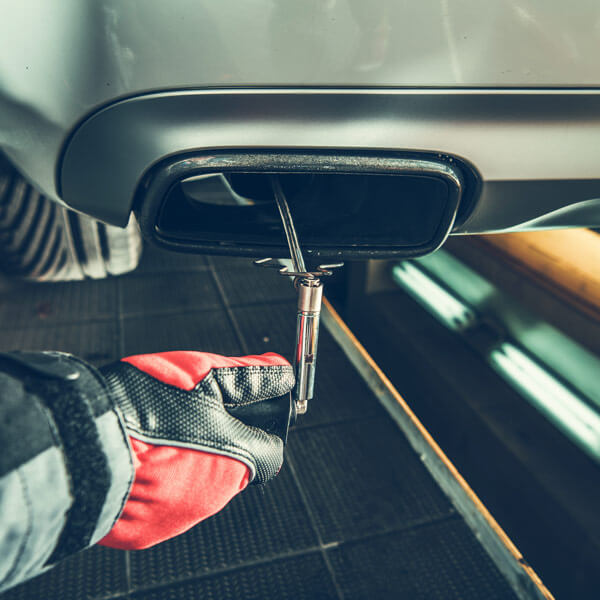Computer Diagnostics
Computer Control Diagnostics at Murray’s Auto Clinic
Although a “computer diagnosis” may sound serious, it is actually a common practice used by automotive repair professionals to identify problems inside today’s computer-controlled cars. Computer control diagnostics is often the most efficient and cost effective way for the technicians at Murray’s Auto Clinic in Silver Spring, MD to pinpoint the cause of the problems you are experiencing with your car.

How Computer Control Diagnostics Work
Modern vehicles are equipped with an On-Board Diagnostics (OBD) that manages the electronic control system. If a signal is recorded outside the normal limits, or if an expected change in a signal is not recorded, a Diagnostic Trouble Code (DTC) is stored in the OBD. If you are experiencing car trouble, an automotive repair technician will connect a scanning tool to a diagnostic link connector that is commonly located under the instrument panel on the driver’s side. This scan tool displays any DTCs stored by the OBD. However, DTCs don’t necessarily mean that a particular part or component is bad bur rather indicate that the OBD has seen something it didn’t expect in a certain circuit. To pinpoint the problem, the technician starts with the DTC and then performs additional tests ranging from mechanical checks to in-depth electronic diagnosis.
Computer-Controlled Sensors & Modules
There are hundreds of different sensors and modules throughout your vehicle that control almost every aspect of performance—and trouble with just one of them can cause major car troubles. Here are some of the most common sensors and electronic components that result in engine failure.
Crankshaft/Camshaft Position Sensor
This monitors the rotations of the engine and tells the computer exactly when to trigger the fuel injectors or the ignition spark.
Electronic Control Module
The ECM controls spark timing, fuel delivery, and emission controls and continuously monitors signals from sensors and input devices inside or near the engine.
Fuel Injector
The ECM tells the fuel injector exactly when and how much fuel to inject into the intake manifold to produce the needed amount of power.
Throttle Position Sensor
The TPS monitors the position of the accelerator pedal and throttle linkage so the ECM can make accurate air/fuel mixture adjustments to optimize performance and keep emissions low.

Emissions Failure
Speaking of emissions, one of the primary reasons for a failed emissions test is a problem within the powertrain and emission control systems. If your vehicle fails emissions, you will be given a Vehicle Emissions Inspection Certificate and a Diagnostic Report which details the reasons for the failure. You will automatically fail emissions testing if the “Check Engine” light is on, so bring your car to Murray’s Auto Clinic before visiting VEIP. A diagnostics scan can reveal the cause of the check engine light, which is most often caused by:
- Faulty oxygen sensor
- Faulty catalytic convertor
- Faulty mass airflow sensor
- Faulty spark plugs and/or spark plug wires
